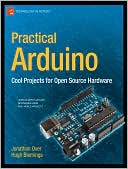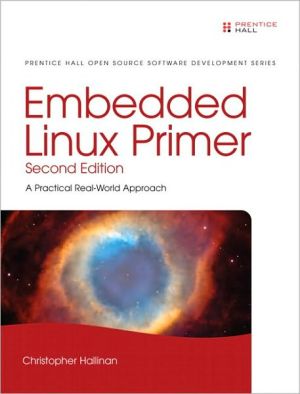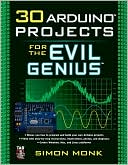Applied Digital Optics: From Micro-optics to Nanophotonics
Miniaturization and mass replications have begun to lead the optical industry in the transition from traditional analog to novel digital optics. As digital optics enter the realm of mainstream technology through the worldwide sale of consumer electronic devices, this timely book aims to present the topic of digital optics in a unified way. Ranging from micro-optics to nanophotonics, and design to fabrication through to integration in final products, it reviews the various physical...
Search in google:
Miniaturization and mass replications have begun to lead the optical industry in the transition from traditional analog to novel digital optics. As digital optics enter the realm of mainstream technology through the worldwide sale of consumer electronic devices, this timely book aims to present the topic of digital optics in a unified way. Ranging from micro-optics to nanophotonics, and design to fabrication through to integration in final products, it reviews the various physical implementations of digital optics in either micro-refractives, waveguide (planar lightwave chips), diffractive and hybrid optics or sub-wavelength structures (resonant gratings, surface plasmons, photonic crystals and metamaterials). Finally, it presents a comprehensive list of industrial and commercial applications that are taking advantage of the unique properties of digital optics. Helps optical engineers review and choose the appropriate software tools to design, model and generate fabrication files.Gives product managers access to an exhaustive list of applications available in today’s market for integrating such digital optics, as well as where the next potential application of digital optics might be.Provides a broad view for technical marketing managers in all aspects of digital optics, and how such optics can be classified.Explains the numerical implementation of optical design and modelling techniques.Enables micro-optics foundries to integrate the latest fabrication and replication techniques, and accordingly fine tune their own fabrication processes.Supplementary book material is available at www.applieddigitaloptics.com Applied Digital Optics is aimed primarily at optical engineers and product development and technical marketing managers; it is also of interest to graduate-level photonics students and micro-optic foundries.
About the Authors xiForeword Joseph Goodman xiiiForeword Trevor Hall xvAcknowledgments xviiAcronyms xixIntroduction 1Why a Book on Digital Optics? 1Digital versus Analog 2What are Digital Optics? 2The Realm of Digital Optics 3Supplementary Material 41 From Refraction to Diffraction 51.1 Refraction and Diffraction Phenomena 51.2 Understanding the Diffraction Phenomenon 51.3 No More Parasitic Effects 81.4 From Refractive Optics to Diffractive Optics 91.5 From Diffractive Optics to Digital Optics 111.6 Are Diffractives and Refractives Interchangeable Elements? 132 Classification of Digital Optics 152.1 Early Digital Optics 152.2 Guided-wave Digital Optics 162.3 Free-space Digital Optics 172.4 Hybrid Digital Optics 193 Guided-wave Digital Optics 213.1 From Optical Fibers to Planar Lightwave Circuits (PLCs) 213.2 Light Propagation in Waveguides 223.3 The Optical Fiber 253.4 The Dielectric Slab Waveguide 273.5 Channel Waveguides 283.6 PLC In- and Out-coupling 303.7 Functionality Integration 364 Refractive Micro-optics 474.1 Micro-optics in Nature 474.2 GRIN Lenses 494.3 Surface-relief Micro-optics 554.4 Micro-optics Arrays 585 Digital Diffractive Optics: Analytic Type 715.1 Analytic and Numeric Digital Diffractives 735.2 The Notion of Diffraction Orders 735.3 Diffraction Gratings 765.4 Diffractive Optical Elements 905.5 Diffractive Interferogram Lenses 1066 Digital Diffractive Optics: Numeric Type 1116.1 Computer-generated Holograms 1116.2 Designing CGHs 1156.3 Multiplexing CGHs 1496.4 Various CGH Functionality Implementations 1517 Hybrid DigitalOptics 1577.1 Why Combine Different Optical Elements? 1577.2 Analysis of Lens Aberrations 1577.3 Improvement of Optical Functionality 1637.4 The Generation of Novel Optical Functionality 1667.5 Waveguide-based Hybrid Optics 1697.6 Reducing Weight, Size and Cost 1717.7 Specifying Hybrid Optics in Optical CAD/CAM 1737.8 A Parametric Design Example of Hybrid Optics via Ray-tracing Techniques 1758 Digital Holographic Optics 1818.1 Conventional Holography 1818.2 Different Types of Holograms I858.3 Unique Features of Holograms 1888.4 Modeling the Behavior of Volume Holograms 1928.5 HOE Lenses 1998.6 HOE Design Tools 2038.7 Holographic Origination Techniques 2038.8 Holographic Materials for HOEs 2078.9 Other Holographic Techniques 2129 Dynamic Digital Optics 2179.1 An Introduction to Dynamic Digital Optics 2179.2 Switchable Digital Optics 2239.3 Tunable Digital Optics 2359.4 Reconfigurable Digital Optics 2449.5 Digital Software Lenses: Wavefront Coding 25010 Digital Nano-optics 25310.1 The Concept of 'Nano' in Optics 25310.2 Sub-wavelength Gratings 25310.3 Modeling Sub-wavelength Gratings 25510.4 Engineering Effective Medium Optical Elements 26710.5 Form Birefringence Materials 27210.6 Guided Mode Resonance Gratings 27510.7 Surface Plasmonics 27710.8 Photonic Crystals 27910.9 Optical Metamaterials 28811 Digital Optics Modeling Techniques 29511.1 Tools Based on Ray Tracing 29511.2 Scalar Diffraction Based Propagators 29811.3 Beam Propagation Modeling (BPM) Methods 32111.4 Nonparaxial Diffraction Regime Issues 32311.5 Rigorous Electromagnetic Modeling Techniques 32611.6 Digital Optics Design and Modeling Tools Available Today 32711.7 Practical Paraxial Numeric Modeling Examples 33012 Digital Optics Fabrication Techniques 33912.1 Holographic Origination 34012.2 Diamond Tool Machining 34212.3 Photo-reduction 34612.4 Microlithographic Fabrication of Digital Optics 34712.5 Micro-refractive Element Fabrication Techniques 38512.6 Direct Writing Techniques 38812.7 Gray-scale Optical Lithography 39412.8 Front/Back Side Wafer Alignments and Wafer Stacks 40612.9 A Summary of Fabrication Techniques 40813 Design for Manufacturing 41313.1 The Lithographic Challenge 41313.2 Software Solutions: Reticle Enhancement Techniques 41813.3 Hardware Solutions 44513.4 Process Solutions 44914 Replication Techniques for Digital Optics 45314.1 The LIGA Process 45314.2 Mold Generation Techniques 45514.3 Embossing Techniques 45914.4 The UV Casting Process 46414.5 Injection Molding Techniques 46414.6 The Sol-Gel Process 47114.7 The Nano-replication Process 47214.8 A Summary of Replication Technologies 47515 Specifying and Testing Digital Optics 47915.1 Fabless Lithographic Fabrication Management 47915.2 Specifying the Fabrication Process 48015.3 Fabrication Evaluation 49415.4 Optical Functionality Evaluation 51016 Digital Optics Application Pools 52116.1 Heavy Industry 52216.2 Defense, Security and Space 53216.3 Clean Energy 53916.4 Factory Automation 54116.5 Optical Telecoms 54416.6 Biomedical Applications 54816.7 Entertainment and Marketing 55316.8 Consumer Electronics 55416.9 Summary 57416.10 The Future of Digital Optics 574Conclusion 581Appendix A Rigorous Theory of Diffraction 583A.l Maxwell's Equations 583A.2 Wave Propagation and the Wave Equation 583A.3 Towards a Scalar Field Representation 584Appendix B The Scalar Theory of Diffraction 587B.l Full Scalar Theory 587B.2 Scalar Diffraction Models for Digital Optics 594B.3 Extended Scalar Models 595Appendix C FFTs and DFTs in Optics 597C.l The Fourier Transform in Optics Today 597C.2 Conditions for the Existence of the Fourier Transform 600C.3 The Complex Fourier Transform 600C.4 The Discrete Fourier Transform 601C.5 The Properties of the Fourier Transform and Examples in Optics 604C.6 Other Transforms 606Index 611
\ From the Publisher"A volume that many engineers and students have been waiting for! Written by two eminent researchers in the field Bernard Kress and Patrick Meyrueis, Applied Digital Optics fulfils a real need for many." (Current Engineering Practice, 2010)\ "Summing up, a gem of a book those involved in digital optics cannot do without. The wide-ranging discussion of applications of digital optics will be recognized and highly regarded as a part of the armamentarium essential for anyone who wants to be brought up to date on what has been happening and what is happening in the field. It will inspire even more innovation and progress in an important field". (Current Engineering Practice, 1 November 2010)\ \ \








